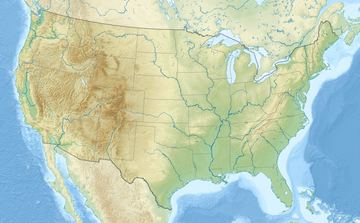1950 National Football League season
NFL teams:  National,
National,  American
American The 1950 NFL season was the 31st regular season of the National Football League. The merger with the All-America Football Conference (AAFC) expanded the league to 13 teams. Meanwhile, television brought a new era to the game. The Los Angeles Rams became the first NFL team to have all of its games – both home and away – televised. The Washington Redskins became the second team to put their games on TV. Other teams arranged to have selected games televised.
The AAFC–NFL merger
The NFL and the AAFC merged prior to the season, announced on December 9, 1949.[1][2] Three AAFC teams — Cleveland Browns, San Francisco 49ers, and Baltimore Colts — joined the NFL intact. The players of the former AAFC New York Yankees team were divided up between the New York Giants and the New York Bulldogs (who changed their name to New York Yanks), the Los Angeles Dons and Los Angeles Rams merged, and a portion of the AAFC Buffalo Bills was absorbed into the Browns organization. A special dispersal draft was then held by the league's 13 teams on June 2, 1950 to allocate the rest of the AAFC players.
The 13 teams were realigned into the American and National conferences, which lasted for three seasons. The merged league briefly flirted with the name "National-American Football League",[1][2] but restored the name "National Football League" a few months later on March 3, 1950.[3] Under the alignment, both conferences had a team in New York and Chicago. The "American Conference" (formerly the Eastern Division) had six teams including the Giants and the Cardinals, and the "National Conference" (the old Western Division) had seven teams including the Yanks and the Bears, as well as the Baltimore Colts.
Baltimore was declared a "swing team" and played one game against 10 of the other 12 NFL clubs and twice against Washington. The original intent of the merger was to have the popular Cleveland Browns serve as this team for two years to equally help gate receipts throughout the league, however, this was refused point blank by Paul Brown. Over a 13-week season, one team was idle each week while the other 12 met in the six scheduled games. Each team played a home-and-away game against the other five teams in their conference, one game outside the conference, and one game against Baltimore over the course of a 12-game schedule.
The league also established the Pro Bowl in the 1950 season. Though the league had attempted an all-star game annually between 1938 and 1942, it had cancelled the game because of World War II and did not revive it when the war ended. Unlike the previous all-star game format, which pitted the league's most recent champion against the league's best all-stars, the Pro Bowl would pit two all-star teams, one from each conference, against each other.
Also, the 1950 season saw the first game played outside the United States when the New York Giants played the Ottawa Rough Riders of the Interprovincial Rugby Football Union in an exhibition match on August 12. The Giants and Rough Riders would repeat the feat in 1951; the Giants handily won both games.
Draft
The 1950 NFL draft was held from January 20–21, 1950 at Philadelphia's Bellevue-Stratford Hotel. With the first pick, the Detroit Lions selected end Leon Hart from the University of Notre Dame.
Playoffs
The only scheduled playoff game was the championship game. The two conference playoffs were tiebreakers.
